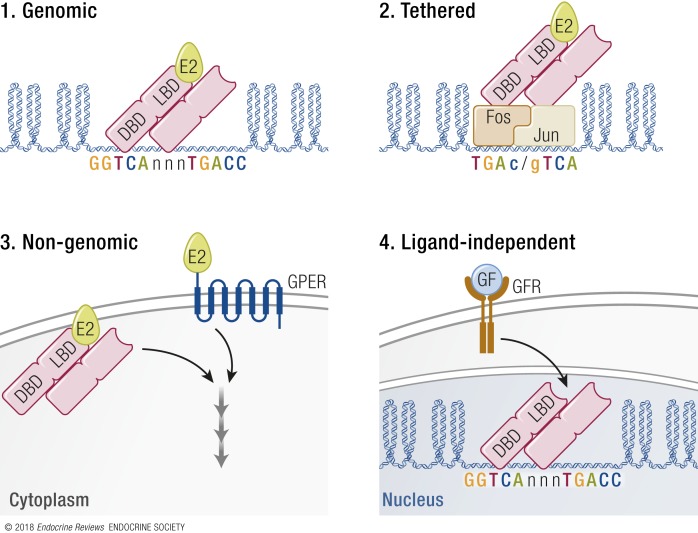Figure 3.
Variations in the basic mechanism of E2 response. Four different E2 response mechanisms have been described. (1) The genomic mechanism involves interaction between ER and ERE DNA motifs. (2) The tethered mechanism involves indirect interaction between ER and other transcriptional regulators, such as the AP-1 DNA motif that binds the FOS/JUN dimer. Thus, ER is “tethered” to the DNA via, in this example, FOS/JUN binding to its AP-1 DNA motif. (3) Nongenomic signaling is so-called because it initiates a signal from extracellular E2 that leads to rapid signal cascades in the cytoplasm, and thus the response does not involve interaction with genomic features. The responses are mediated by membrane-associated ER, or by GPER, a G protein–coupled receptor. (4) Ligand-independent signaling involves transduction of extracellular growth factor (GF) activation of cell membrane GF receptor (GFR), which initiates signaling cascades, such as MAPK. The signal is received by the ER, activating its transcriptional modulation of target genes, despite lacking E2 ligand.

